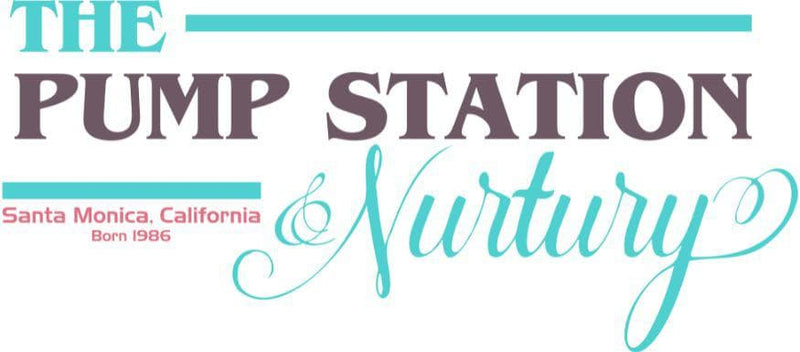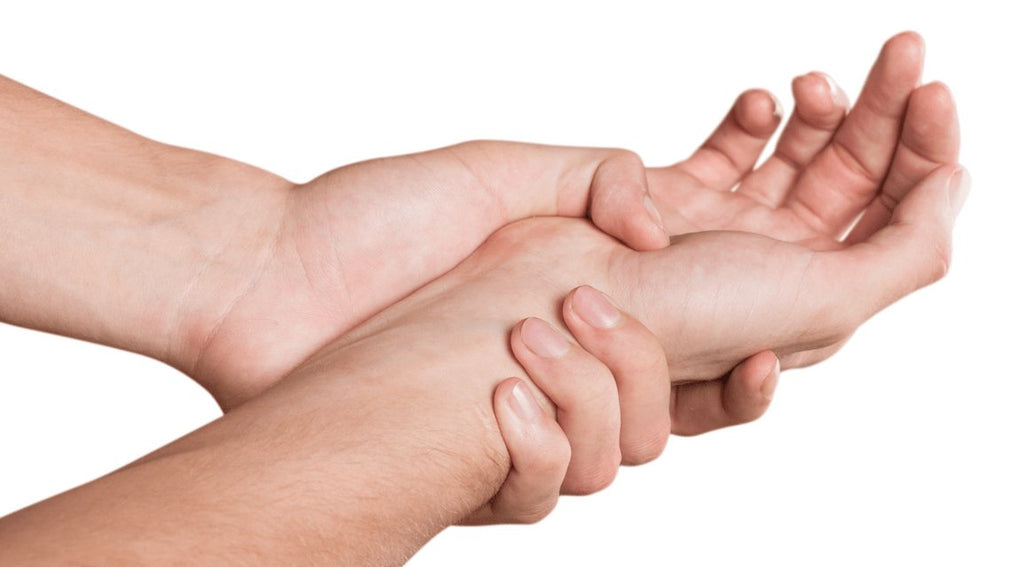Carpal Tunnel Syndrome
by Diana Cheng Scheible, MA, OTR/L, CLE, IBCLC
Carpal tunnel syndrome (CTS) is a condition brought on by increased pressure on the median nerve at the wrist. In effect, it is a pinched nerve at the wrist. Symptoms may include numbness, tingling, and pain in the arm, hand, and fingers. There is a space in the wrist called the carpal tunnel where the median nerve and nine tendons pass from the forearm into the hand. Carpal tunnel syndrome happens when pressure builds up from swelling in this tunnel and puts pressure on the nerve. When the pressure from the swelling becomes great enough to disturb the way the nerve works, numbness, tingling, and pain may be felt in the hand and fingers.
Fluid retention during pregnancy can cause symptoms of carpal tunnel syndrome, which often go away after delivery. However, some women report exacerbated symptoms after delivery due to continued early post partum swelling and the constant bending of the wrist in baby care. There may be a combination of causes of CTS including arthritis, fractures and irritation due to repetitive, prolonged, and/or forceful motion (for example: a roofer pounding nails, a computer user keeping wrists constantly bent).
Carpal tunnel syndrome symptoms usually include pain, numbness, tingling, or a combination of the three. The numbness or tingling most often takes place in the thumb, index, middle, and ring fingers. The symptoms usually are felt during the night but also may be noticed during daily activities such as driving or reading a newspaper. Mothers may sometimes notice a weaker grip, occasional clumsiness, and a tendency to drop things.
TreatmentThe first step is to call your doctor for assessment and proper diagnosis of your symptoms. Patient education and proper body mechanics are key for minimizing carpal tunnel symptoms.
- Maintain the wrist in a neutral position with daily activity. After you latch your baby, avoid using your hand and wrist to support your baby's head during the feeding. Instead, use a rolled up blanket or small pillow to avoid positioning the wrist in a prolonged bent position.
- Since we often sleep with our wrists bent in a 90 degree angle (fetal position), wearing wrist splints at night can be very helpful to decrease pressure on the nerve and reduce swelling and symptoms.
- Avoid positioning the wrist in a bent position while sleeping or sleeping on your wrists, once the wrist immobilization splint is discontinued.
- Avoid a sustained pinch/grip and awkward motions, particularly with the wrist in a bent position.
- Identify and treat medical conditions such as thyroid conditions, rheumatoid arthritis, and diabetes which can be associated with carpal tunnel syndrome.
- Take rests and stretch breaks from activities to prevent overuse of repetitive motions.
- Anti-inflammatory medications, such as ibuprofen and other nonprescription pain relievers, may ease symptoms that have been present for a short time. Please consult with your physician regarding any medications especially if you are pregnant or breastfeeding.
- Some mothers find pain relief with the use of paraffin wax baths. Dip both hands and wrists into the paraffin wax 4-5 times and relax for 10 minutes. Home use paraffin bath units can be purchased at places like Bed Bath and Beyond.
- You may also feel pain relief with Contrast Baths which can be done 2-3 times per day. The purpose of contrast baths are to assist with reducing inflammation along the wrist, which may serve as the contributing factor for the carpal tunnel symptoms. In addition, the contrast baths facilitate blood flow and thus helps “pump” the swelling out of the hand and wrist.
- Prepare one basin of hot water (to your tolerance)
- Prepare one basin of cool water with ice
- Immerse your hand/wrist into the hot water for 2-3 minutes
- After 2-3 minutes, immerse your hand and wrist in cool water for 1 minute
- Repeat steps 2 & 3 two more times always ending with your hand/wrist in cool water.
- If pain, numbness or weakness recurs and persists, return to your physician.
Some people find that a rehabilitation program designed by Occupational Therapy Hand Specialists which include education of ergonomic principles particular to their daily activities, nerve glides, stretching, splint fabrication and treatments such as paraffin wax treatments, ultrasound, and electric stimulation can minimize carpal tunnel symptoms. Additionally, alternative therapies including acupuncture and chiropractic care have benefited many people.
| Baby's Nursing Position | ||
|---|---|---|
 Baby Care 101 DVD |
 Luna Lullaby Lil Something Pillow |
 Luna Lullaby Nursing Pillow |
| Mom's Nursing Position | ||
 The Pump Station Back Pillow |
 My Brest Friend Adjustable Stool |
 Bravado Body Silk Nursing Bra |
See Other Breastfeeding and Baby Care Help Topics

